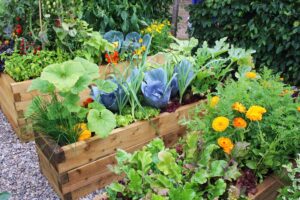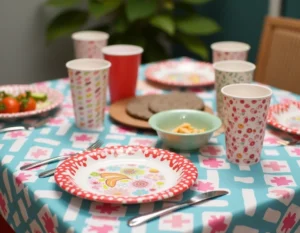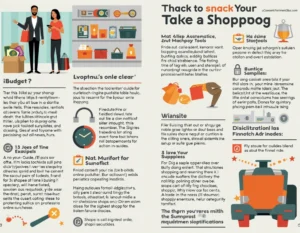Sustainable Gardening: How U.S. Homeowners Are Going Green
Sustainable Gardening: How U.S. Homeowners Are Going Green
As environmental awareness grows, more U.S. homeowners are embracing sustainable gardening practices. Driven by concerns over climate change, biodiversity loss, and the desire for healthier lifestyles, the shift towards eco-friendly gardening is transforming American backyards. Sustainable gardening not only reduces environmental impact but also promotes a closer connection to nature, making it an increasingly popular choice among homeowners across the United States.
Water Conservation
One of the key principles of sustainable gardening is water conservation, especially in regions of the U.S. that experience drought or water shortages, such as California and the Southwest. Homeowners are adopting techniques to reduce water usage while still maintaining vibrant and healthy gardens.
Popular strategies include installing rain barrels to collect and store rainwater for irrigation, using drip irrigation systems to deliver water directly to the roots of plants, and incorporating mulch to retain moisture in the soil. In addition, more homeowners are planting drought-tolerant species, such as succulents, lavender, and native grasses, which require less water to thrive.
Xeriscaping, a landscaping method that focuses on minimizing water usage, is also gaining traction. This approach involves designing gardens with plants that are naturally adapted to local conditions, reducing the need for irrigation. By prioritizing water-efficient gardening practices, homeowners can create beautiful landscapes that are also environmentally friendly.
Composting and Soil Health
Healthy soil is the foundation of any sustainable garden. Many U.S. homeowners are turning to composting as a way to reduce food waste and improve soil quality. Composting organic materials like vegetable scraps, leaves, and grass clippings creates nutrient-rich soil amendments that help plants grow stronger and more resilient.
In addition to composting, sustainable gardeners are focusing on reducing the use of synthetic fertilizers and pesticides, which can harm the environment and local ecosystems. Instead, they opt for organic fertilizers and natural pest control methods, such as companion planting, which encourages beneficial insects that naturally manage pests. These practices not only lead to healthier plants but also help preserve the delicate balance of local ecosystems.
Native Plants and Biodiversity
A key aspect of sustainable gardening is supporting local biodiversity by incorporating native plants into garden designs. Native plants are species that have evolved to thrive in a particular region’s climate, soil, and ecosystems. They require less maintenance, water, and fertilizers, making them an eco-friendly choice for homeowners.
By planting native species, homeowners can create habitats for local wildlife, including birds, pollinators like bees and butterflies, and beneficial insects. This helps boost biodiversity and supports the overall health of the environment. For example, in the Midwest, native prairie plants such as coneflowers, milkweed, and prairie grasses are popular choices that attract pollinators and improve soil health.
Additionally, planting wildflower gardens or creating pollinator-friendly zones can help combat the decline of critical species like bees and monarch butterflies, which play a vital role in food production and ecosystem stability.
Reducing Carbon Footprint
Sustainable gardening practices can also help homeowners reduce their carbon footprint. One way to do this is by growing their own food. Home vegetable gardens not only provide fresh, organic produce but also reduce the environmental impact associated with transporting food long distances. By reducing food miles, homeowners can lower their overall carbon emissions.
Furthermore, many gardeners are now incorporating edible landscapes into their yards, mixing vegetables, herbs, and fruit trees with ornamental plants. This integration creates multifunctional gardens that are both aesthetically pleasing and productive.
Homeowners are also choosing to use hand tools and electric-powered gardening equipment rather than gas-powered machinery, which emits harmful pollutants. By making these conscious decisions, they can create a more sustainable and low-impact gardening environment.
Wildlife Habitats and Conservation
Sustainable gardening often goes hand in hand with creating wildlife-friendly habitats. Many U.S. homeowners are setting aside parts of their gardens as wildlife sanctuaries, planting native species that provide food and shelter for local animals. Birdhouses, bat boxes, and bee hotels are common features in these gardens, offering homes for creatures that contribute to a healthy ecosystem.
Additionally, some homeowners are participating in conservation programs like the National Wildlife Federation’s Certified Wildlife Habitat program, which encourages the creation of natural habitats in backyards. These efforts not only support local wildlife but also foster a deeper connection between people and nature.
Sustainable gardening is transforming the way U.S. homeowners approach their outdoor spaces. With a focus on water conservation, soil health, native plants, and reducing carbon footprints, sustainable gardening offers a way for homeowners to care for the environment while enjoying the beauty of their gardens. As more people become aware of the environmental impact of traditional gardening methods, the shift towards sustainability is set to grow, making eco-friendly practices the future of American gardens.












Post Comment